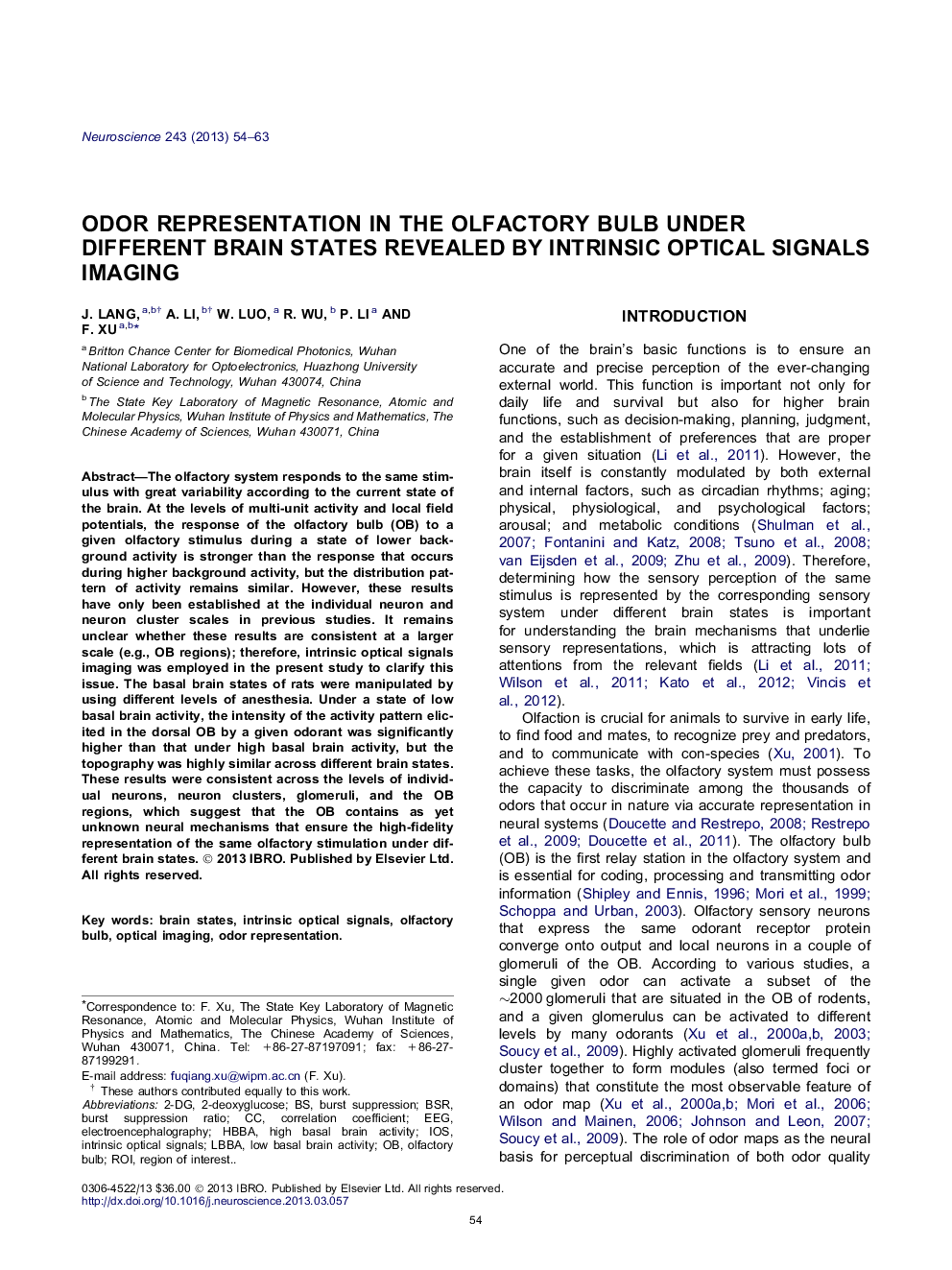| Article ID | Journal | Published Year | Pages | File Type |
|---|---|---|---|---|
| 4338003 | Neuroscience | 2013 | 10 Pages |
Abstract
The olfactory system responds to the same stimulus with great variability according to the current state of the brain. At the levels of multi-unit activity and local field potentials, the response of the olfactory bulb (OB) to a given olfactory stimulus during a state of lower background activity is stronger than the response that occurs during higher background activity, but the distribution pattern of activity remains similar. However, these results have only been established at the individual neuron and neuron cluster scales in previous studies. It remains unclear whether these results are consistent at a larger scale (e.g., OB regions); therefore, intrinsic optical signals imaging was employed in the present study to clarify this issue. The basal brain states of rats were manipulated by using different levels of anesthesia. Under a state of low basal brain activity, the intensity of the activity pattern elicited in the dorsal OB by a given odorant was significantly higher than that under high basal brain activity, but the topography was highly similar across different brain states. These results were consistent across the levels of individual neurons, neuron clusters, glomeruli, and the OB regions, which suggest that the OB contains as yet unknown neural mechanisms that ensure the high-fidelity representation of the same olfactory stimulation under different brain states.
Keywords
Related Topics
Life Sciences
Neuroscience
Neuroscience (General)
Authors
J. Lang, A. Li, W. Luo, R. Wu, P. Li, F. Xu,
